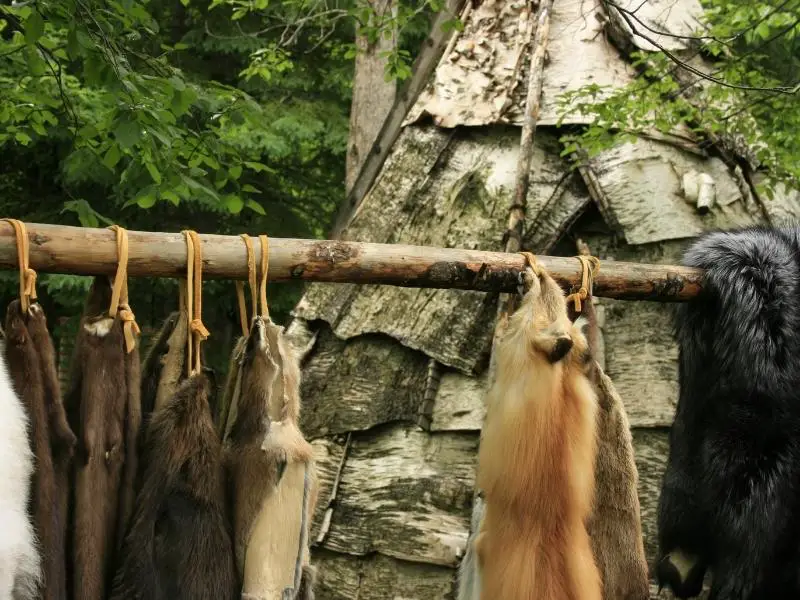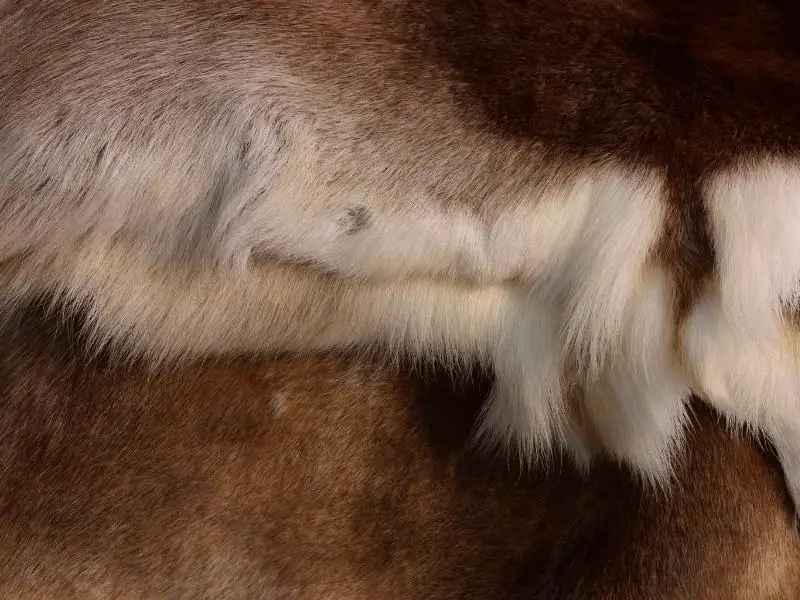Have you ever wondered if there is more you could be doing with the byproducts of breeding rabbits for meat? Well, you could start by tanning and selling your rabbit pelts to various outlets.
So what can you do with rabbit pelts?
Rabbit pelts are very warm and exceptionally soft, and thus, rabbit pelts are most commonly used to make gloves, hats, blankets, and even toys. If you live in cold climates, rabbit fur can be used to line jackets, hats, and winter boots for extra protection against the cold.
If you own a homestead (and want to use the whole rabbit, nose to tail) or are simply curious about rabbit pelts and what you can do with them, then this is the perfect guide for you.
What Are Rabbit Pelts?
A rabbit pelt also called a cony, comb, or lapin is the skin of a rabbit, which includes its fur. The most popular rabbit pelts are produced from the Rex rabbit because of their short, thick, and fluffy coats.
Rabbit pelts need to be tanned before they can be used, and tanning the hides does require quite a bit of work, as the hide can tear easily.
What Can a Rabbit Pelt Be Used For?

Rabbit pelts have many different uses, especially for people who try to live a sustainable life and use as many rabbit byproducts as possible.
Let’s take a closer look at some of these uses:
Clothing
Clothing is one of the most popular uses for rabbit hide and fur. The pelts are sewn into the lining of clothing to give it extra warmth, and the fur is often used to decorate the outside of winter coats.
Rabbit fur is also used to make felt, which makes a thick and sturdy cloth that can be used to make clothing accessories such as hats.
Rabbit pelts are also soft and light, and unfortunately, they can tear quite easily. Crafters and clothing companies need to strengthen the clothing by adding a few cords of yarn that are made from rabbit pelts.
Here is a list of some clothing items that are made from rabbit pelts:
- Baby booties
- Fur hats
- Leggings
- Shirts
- Socks
- Beanies
- Sweaters
- Scarves
- Mittens
Another popular clothing item made from rabbit hides and fur is a full rabbit fur coat. Unfortunately, because rabbit pelts are so small, a full winter coat would require several hides.
Bedding
Another excellent use for rabbit pelts is to make bedding. The soft hides can be sewn together and dyed to make beautiful blankets and bedspreads.
When using rabbit fur hides to make blankets, it’s essential to remember that you will have two different types of fur throughout the year.
In winter, rabbit fur is thicker and sometimes limited to a white color. In summer, the rabbit fur has different lengths (due to the bunnies shedding or molting season), but there is a bigger color range available such as red and brown fur.
Let’s take a look at some of the bedding items that can be made from rabbit pelts and fur:
- Pillow covers
- Blanket covers for a baby
- Patchwork quilts
- A small throw
Stuffing
Rabbit fur can be used for stuffing toys such as dolls and toy animals.
Another great use for rabbit fur is to fill pillows and comforters with stuffing, which will provide extra warmth for those cold winter nights.
Other Rabbit Byproducts
Here are a few ways you can use the byproducts of rabbit pelts sustainably:
Rabbit Yarn
Another option is to shear a rabbit’s fur and spin it into yarn, which can be used to knit various garments and blankets.
Shearing a rabbit is a great way to lead a sustainable lifestyle, as you use as much of the rabbit as possible without wasting any byproducts.
Rabbit Manure Fertilizer
Rabbit manure (called bunny honey) is a fantastic fertilizer that is rich in nitrogen and phosphorus. It has about four times more nutrients in it than cow manure and is richer than chicken manure.
Homesteaders also collect rabbit urine and pelts, which they add to compost manure, such as cow dung.
This fertilizer is also popular since it can be used as a natural insecticide for vegetables and maize. This is done by mixing the fertilizer with water and spraying it on the crops.
Dog and Cat Food
When a rabbit is slaughtered for their hides, another option is to use the rabbit’s head, kidneys, heart, and spleen as dog food. A rabbit diet is a healthy alternative to traditional pellets for dogs and cats.
Dried rabbit feet and ears make excellent dog and cat treats. The bones from the rabbit are also good to chew toys for dogs.
Fish Food
Rabbit droppings make an excellent alternative as food for Tilapia in fish ponds and have been known to improve growth and production within the pond ecosystem.
Rabbit Meat
Rabbit meat is a popular alternative to traditional meat such as beef and chicken. It is a good source of protein because of its rich nutritional value.
Are Rabbit Pelts Worth Anything?
You can make money from selling rabbit pelts. However, it’s not as popular as fur from a mink or fox.
There are certain breeds of rabbits whose hides are worth more, such as the Rex rabbit, with its soft fur and pliable leather.
Here are a few factors that affect the value of rabbit pelts:
- Breed of the rabbit
- Age of the rabbit
- The tanning process, as well as the tanner’s skill
How Much Can You Get for a Rabbit Pelt?
Based on the breed, age, fur color, and tan quality of your rabbit pelt, you can get between $1.50 to $100.00 per pelt.
- Yarn stores
- Fiber artists
- Flea markets
- Crafters
- The commercial industry
My Last Bunny Thoughts
While breeding rabbits for meat is a lucrative source of income, it’s essential to try and use all the byproducts of rabbits.
Quite a few homesteaders simply discard the pelts once they have slaughtered the rabbit because it’s quite a process to tan rabbit hides.
But once a rabbit’s skin has been tanned, there are several uses for the pelt. A great thing about rabbit hide is it’s far easier to work with compared to leather, which means you can easily craft beautiful items for a profit.
Related Articles:

